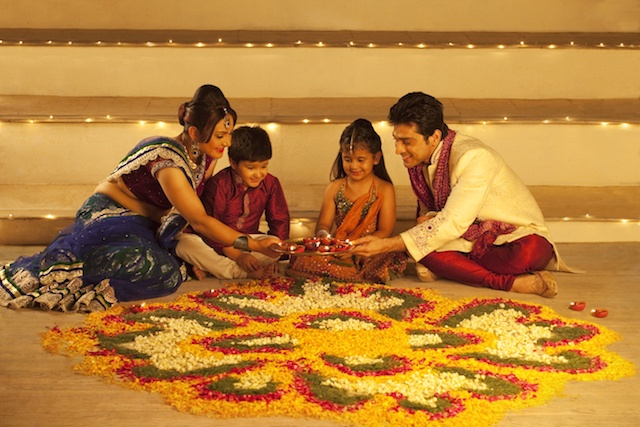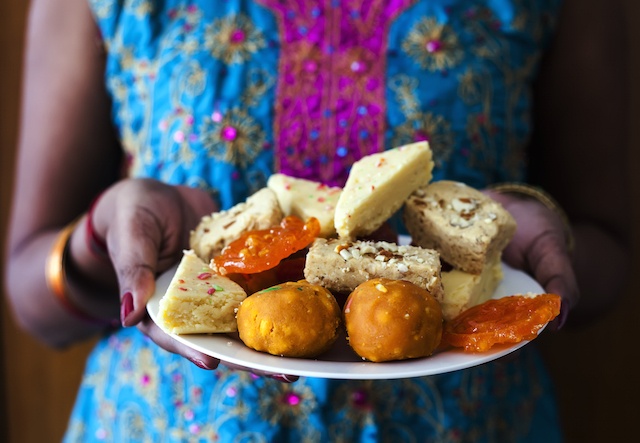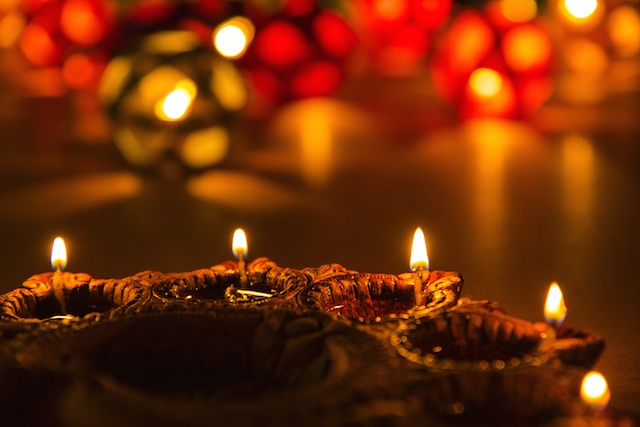Imagine rows of candles adorning the path from the entrance of your home all the way up to the bedroom, the warm glow, the serenity, and the soothing yet powerful feelings they evoke. It’s a beautiful scene you’ve likely seen replicated by many in an effort to create a similar atmosphere but Diwali takes that image and magnifies it several thousand times over. It’s absolutely breath taking.
Our Culture Vulture, Ginika, shares his outside in look at this international festival celebrated by communities around the world at this special time.
Recognized as the festival of light, Diwali, or Deepavali, celebrates the victory of intellectual and spiritual light over darkness and it is characterised by rows (avali) of candles (deepa) placed in every nook and cranny of every home, electric lights draped across the façade of every building, and firework displays bursting and painting the night sky in wonderful colours. The name of the holiday is literally translated in Sanskrit as the Row of Lights, by the way.
The Festival, though, is much more than that. It is a celebration of family, togetherness and prosperity. Families go out buying new clothes, new utensils and jewellery, and with just about everyone going shopping on this day, India has its biggest bazaars (probably a great day for the average merchant!). People also clean their homes to get them ready to welcome the goddess Lakshmi, who brings prosperity with her. This concept reminds me of Chinese New Year, when people clean out their homes before the New Year but not after so as not to sweep away prosperity.
On Choti Diwali (Little Diwali), which is the Diwali eve, mothers and daughters work together to create intricate works of vibrant art in doorways and courtyards called Rangoli, using coloured sand, coloured flour, flowers or even coloured rice. The first time I saw a Rangoli, I was a little surprised by the intricacy and deftness of the work but things became clearer as I learned that designs are past down from generation to generation to keep traditions within the family. Today also marks the beginning of the typical noise of celebratory festivities, as people take to the streets bursting firecrackers. In all honesty, I’m not a big fan of loud noises, but with everyone having fun and joining in on the “explosions of fun”, how could I be a Debby Downer?

Interestingly, Diwali proper is spent mostly in worship of the deities Lakshmi, as well as Ganesh, the remover of obstacles and Lord of new beginnings. Families move in droves to temples where they sing hymns and perform rituals. Flowers and garlands are draped over altars are they worship. After the worship comes to a close, the night is ended with a literal bang. Where Choti Diwali had little firecrackers, the people go all out on Diwali, setting off the fireworks that fill the sky from dusk till dawn. Well, it’s not called the Festival of Light for nothing!
The two days following this climax are spent in much calmer moods, as families spend their day singing hymns and performing more rituals to their deities. An interesting and heart-warming celebration that takes place during this period is called Bhai Duj , when sisters perform rituals for their brothers and offer them sweets, while brothers offer their sisters gifts in return.

All in all, the festival hits all the marks for me bringing together some of my favourite things: Family, desserts and fireworks. This Culture Vulture is a big fan of the Festival of Light.
Ginika
Latest posts by Ginika (see all)
- Rise of the Droids – Why ‘Bots” are Taking Over the World - December 20, 2016
- What is Diwali? Spotlight on the Festival of Light - October 26, 2016
- Why It Is Never Too Late To Learn A Second Language - September 5, 2016

